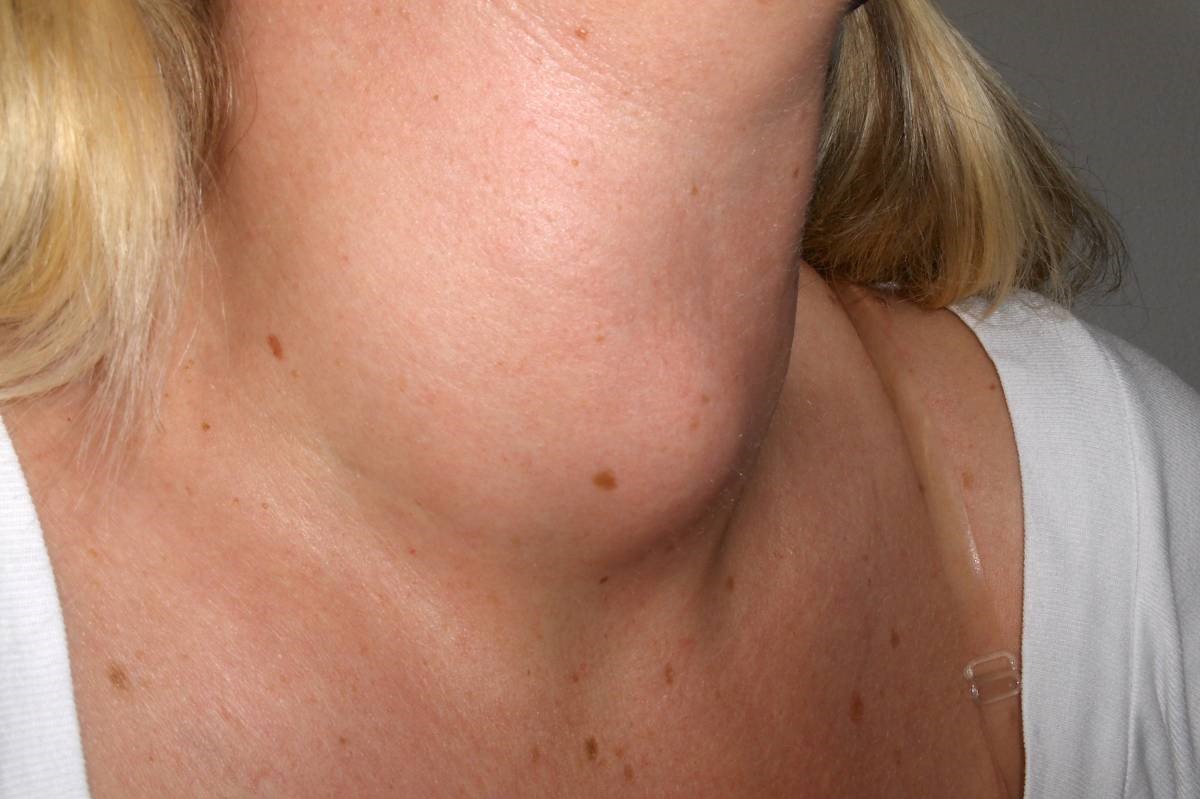
Thyroid nodules: when to worry?
Thyroid nodules are solid or fluid-filled lumps that form inside the thyroid gland, a small gland located at the base of the neck, just above the sternum
Most thyroid nodules are not serious and do not cause symptoms
Only a small percentage of thyroid nodules are cancerous.
Of course, understanding the different cases is the prerogative of the doctor, who should be consulted for comprehensive diagnostic investigations.
Most thyroid nodules cause no signs or symptoms
Occasionally, some nodules become so large that they can
- Be palpable
- Be visible, often as a bulge at the base of the neck
- Press on the trachea or oesophagus, causing shortness of breath or difficulty swallowing
In some cases, thyroid nodules produce an excess of thyroxine, a hormone secreted by the thyroid gland.
Extra thyroxine can cause symptoms of an overproduction of thyroid hormones (hyperthyroidism), such as:
- Unexplained weight loss
- Increased sweating
- Tremor
- Nervousness
- Accelerated or irregular heartbeat
Only a small number of thyroid nodules are cancerous
But determining which nodules are cancerous cannot be done by assessing symptoms alone.
Most cancerous thyroid nodules are slow-growing and may be small when the doctor discovers them.
Aggressive thyroid tumours are rare with nodules that can be large, solid, fixed and fast growing.
Thyroid nodules: when to worry?
In the face of increasing incidence of cases, the question arises: when to worry about thyroid nodules? Thyroid nodules are estimated to occur in 40-50% of the population, but thyroid cancer is found in only 5% of cases.
First step: thyroid hormone assay
The first step in the study of a nodule is blood tests for thyroid hormone dosage (T3, T4, TSH), which are necessary indicators of how the gland, the thyroid gland, is functioning and whether one is facing a condition of normal thyroid activity or, on the contrary, hyperthyroidism or hypothyroidism.
Ultrasound and cytological needle aspiration for the thyroid gland
Another first-level test is thyroid ultrasound.
This test can highlight ultrasound features of the nodule that are associated with increased risk profiles.
The outcome of the ultrasound scan is useful in assessing the appropriateness of further investigation.
Among the second-level tests, the most important is the thyroid needle aspiration cytology test, which allows the nature of the lesion to be defined by studying cells aspirated into the nodule.
Benign or malignant thyroid nodules
The outcome may indicate a condition of benignity (benign thyroid nodules), of malignancy (malignant thyroid nodules), where total or partial removal of the thyroid is required, or of uncertainty.
And in these cases of doubtful malignancy, surgery is often resorted to in order to have a definitive picture of the nature of the nodule.
If the needle aspiration result outlines cytological characteristics of benignity and the size of the thyroid nodules – generally under 4 cm – is such that it does not cause any compression problems, such as a sense of constriction, due to a growing goitre, breathing or swallowing difficulties, and in the absence of signs of hyperactivity of the nodule, then monitoring at set intervals is sufficient for the patient.
Thyroid surgery and other treatments for nodules
In situations where the presence of a thyroid nodule is associated with hyperthyroidism, therapies are activated, initially medical, with drugs to control the hyperthyroidism, in order to stabilise the situation and then intervene with definitive solutions.
These include surgery and, alternatively, all other treatments for thyroid nodules that aim to destroy the formation, such as thermoablation, alcoholisation or treatment with radioiodine.
As far as surgery for thyroid nodule removal is concerned, the procedure is conducted under general anaesthesia with an incision in the neck.
Depending on the case, one can proceed with the removal of the thyroid nodule or with the removal of the entire thyroid gland, thyroidectomy.
Compared to the past, more attention has also been paid to the aesthetic result: today, in fact, with the use of minimally invasive techniques for thyroid surgery, it is possible to operate with smaller accesses with good results, also from an aesthetic point of view.
The diagnosis and, above all, the treatment of thyroid pathologies require the intervention of a team of different specialists, each with a specific competence to follow thyroid problems: the Endocrinologist, the Radiologist, the Anatomo-pathologist the Surgeon, the Nuclear Medicine specialists, more rarely the Oncologist and the Radiotherapist.
Read Also
Emergency Live Even More…Live: Download The New Free App Of Your Newspaper For IOS And Android
Diseases Of The Thyroid And Other Endocrine Glands
Feeling Cold: This Could Be A Symptom Of Hypothyroidism
Slow Metabolism: Can It Depend On The Thyroid?
Causes, Symptoms And Remedies For Hypothyroidism
Thyroid And Pregnancy: An Overview
Thyroid Nodule: Signs Not To Be Underestimated
Thyroid: 6 Things To Know To Get To Know It Better
Thyroid Nodules: What They Are And When To Remove Them
Thyroid, The Symptoms Of A Malfunctioning Thyroid Gland
Thyroid Nodule: What Is It And What Are The Symptoms?
Symptoms Of Hyperthyroidism: What They Are And How To Treat Them
Irritable Bowel Or Other (Intolerances, SIBO, LGS, Etc.)? Here Are Some Medical Indications
Autoimmune Enteropathy: Intestinal Malabsorption And Severe Diarrhea In Children
Esophageal Achalasia, The Treatment Is Endoscopic
Oesophageal Achalasia: Symptoms And How To Treat It
Eosinophilic Oesophagitis: What It Is, What The Symptoms Are And How To Treat It
Gastroesophageal Reflux: Causes, Symptoms, Tests For Diagnosis And Treatment
Irritable Bowel Syndrome (IBS): A Benign Condition To Keep Under Control
What Is Meant By Malabsorption And What Treatments It Involves


